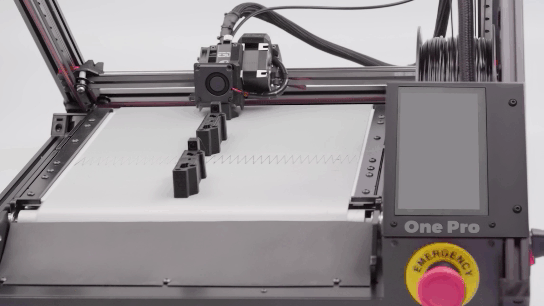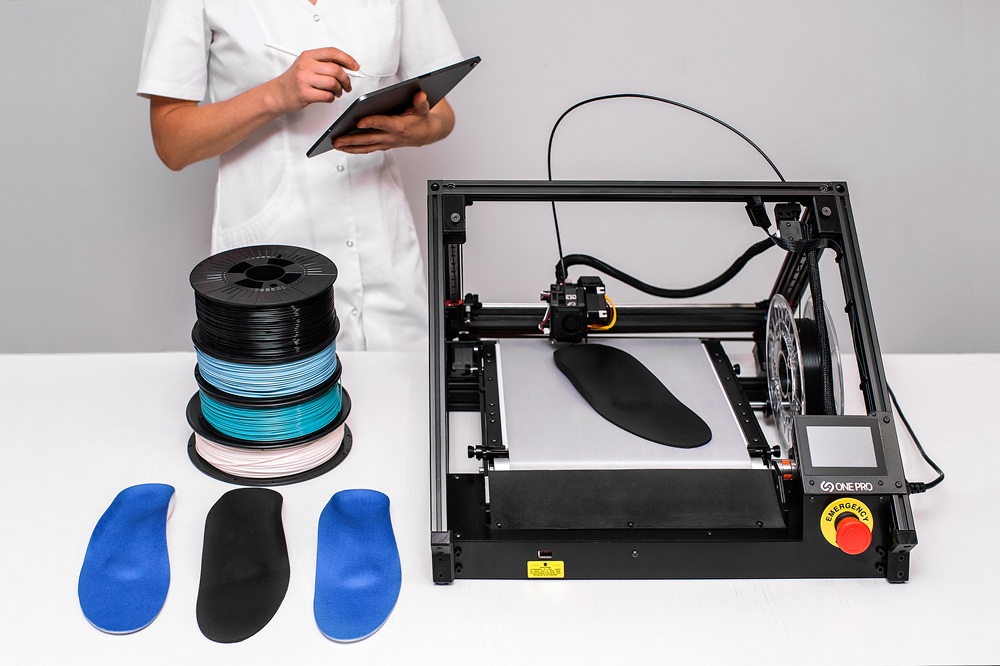Do you love your craft, but are you tired of the physically demanding work at the grinding machine, the pungent smell of adhesives, and the eternal struggle with stagnant insurance reimbursement rates? You are not alone. German orthopedic shoe technology stands at a critical turning point – and the solution is closer than you think.
The industry is battling an acute shortage of skilled workers, training perceived as unattractive, and growing economic pressure. While insurance reimbursement has not been increased for years, material and purchasing costs continue to rise. Many businesses can no longer profitably offer pure insurance-covered services – they are often a loss-making business. Without an economic surcharge, costs usually cannot be covered, which then meets with customer incomprehension.
But there is a way out: 3D printing is currently revolutionizing orthopedic shoe technology and offers a transformative solution to these pressing problems. It promises not only efficiency, quality, and profitability, but makes your profession attractive and future-proof again – with the appropriate CAD course for orthopedic shoemakers.
Why Traditional Training Is No Longer Sufficient
The current vocational school curriculum lags significantly behind technological developments. While official documents do mention the “Digitized Working World” as training content, practice shows a significant discrepancy. Digital modeling (CAD) is treated only superficially, if at all. This leads to a critical knowledge gap that directly affects operational efficiency, profitability, and the attractiveness of the profession.
Apprentices complain: “The training is boring and it stinks” – a statement that succinctly summarizes the negative perception of the profession. Recruitment problems are continuously worsening, while businesses cannot effectively utilize modern technologies. Physical strain remains high, attractiveness low.
Many training companies are legally required to teach digital workflow, but they often lack the necessary know-how. This leads to systemic failure in conveying crucial modern skills and perpetuates outdated practices. While in the Netherlands and England, digital solutions are already standard, Germany often still has a conservative attitude toward new technologies. Many established masters shy away from overcoming the barrier and switching from traditional craftsmanship to working with mouse and keyboard.
The 3D Printing Revolution: Your Path to Efficiency and Modernity
Imagine: Instead of hours of physically demanding work at the grinding machine, you create precise, individual insoles with just a few clicks on the computer. The digital workflow with 3D printers and CAD software like LutraCAD enables the production of insoles within hours – with the highest reproducibility and consistent quality.
The advantages are dramatic: Up to 60% lower material costs through optimized software solutions directly counteract rising procurement costs. Unlike complex, multi-stage traditional production methods, 3D printing offers a clear path to business expansion and scalability. Just-in-time production eliminates expensive inventory management – products are manufactured as needed.
A significant part of the work, especially CAD modeling, can be flexibly completed from home office. This flexibility and modern approach make the profession significantly more attractive to new generations and counteract the shortage of skilled workers. Minimizing manual grinding work and reducing contact with harmful adhesives are the direct answers to complaints about “smell” and “physical strain.”
Digital scanning technologies like 3D laser scanning or smartphone scanning often replace unpleasant plaster moldings and significantly improve the patient experience. Travel to the orthopedist can be reduced, for example, through decentralization of measurement technology. Through data-based quality improvement and standardization, you achieve a level of systematic quality enhancement that is unattainable with purely manual methods. The ability to analyze digital data from multiple practitioners and establish “best practice” benchmarks marks a fundamental shift toward data-driven quality improvement.
The Critical Success Factor: Billing Capability
Here lies the key to success: The most difficult step in introducing 3D printing is not the printing process itself, but the correct and billable modeling of a shoe insole on the computer. The actual printing is largely automated once the digital model is completed.
Insurance companies formally require that orthopedic shoe technical services must be performed by a trained orthopedic shoemaker. The pure technical ability for CAD modeling is not sufficient – it must be inseparably connected with a deep understanding of regulatory and billing requirements. This makes it essential to train existing specialist personnel rather than delegate tasks to non-specialist persons.
Orthopedic shoemakers need precise knowledge of which insoles they may model according to which criteria so that these can be billed by insurance companies. This specific gap creates a precise market need for external, specialized continuing education offerings that the formal education system currently cannot effectively cover.
Your Path to Digital Transformation
The solution lies in targeted continuing education that provides orthopedic shoemakers with the necessary know-how in 3D printing for shoe insoles. Our specialized CAD course for orthopedic shoemakers focuses on using software like LutraCAD and ensuring billing capability – exactly the competence that is missing in traditional training.
The CAD course for orthopedic shoemakers provides comprehensive theoretical knowledge and practical skills to professionally design, model, and prepare 3D-printable shoe insoles for printing. Both precise functional requirements and strict billing standards of insurance companies are considered. Participants learn how to integrate digital workflows into their operations, evaluate the economic benefits of 3D printing, and identify potential new business models.
The core of the continuing education is intensive training in CAD modeling with LutraCAD, combined with practical exercises on iFactory3D printers. The focus is on immediate applicability of learned skills and ensuring that participants can directly use their knowledge for profitable and compliant services.
A crucial aspect is materials science for orthopedic insoles, particularly working with MDR-certified 3D printing materials suitable for medical devices. Participants learn their specific properties, advantages, and suitable applications. Quality assurance in additive manufacturing, best practices for consistent print quality, and navigating compliance with medical device regulations are other central building blocks.
The transformation becomes clear through an overview of the differences between traditional and digital working methods: While traditional methods rely on manual craftsmanship, plaster moldings, and time-consuming grinding work, the digital approach enables CAD modeling, 3D scanning, and automated manufacturing. The work environment transforms from physically demanding, odor-laden workshops to clean, ergonomic workplaces with home office potential.
Invest in Your Future
The digitization of orthopedic shoe technology can no longer be stopped. The question is not whether it’s coming, but when you’ll make the connection. While other countries have already completed the digital transformation, you now have the chance to become a pioneer in Germany.
Our CAD course for orthopedic shoemakers is more than continuing education – it is a strategic investment in your personal professional development, the long-term profitability of your business, the attractiveness of your workplace, and the future of orthopedic shoe technology. The shortage of skilled workers is continuously intensifying, competition from digital providers is growing, and early adopters have clear competitive advantages. Technological development is accelerating, and the time for excuses is over.
While others are still discussing digitization, you can already use the advantages. Take the first step toward a modern, profitable, and attractive future for your craft. The ability to close this specific gap between technical CAD competence and regulatory requirements leads directly to increased profitability and reduced financial risk.
Contact us today for more information and book our CAD course for orthopedic shoemakers. Your future begins with the first step – take it now!
 Serial production
Serial production
